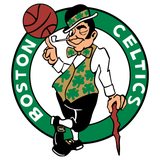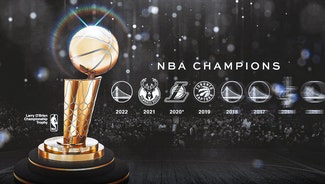
Making The Case For The Cleveland Cavaliers To Avoid A Trade
The Cleveland Cavaliers don’t actually have to make a trade.
That’s just one avenue for the Cleveland Cavaliers to add proven talent to their current stable of players. While the Cavs do have three players, two of who were relied on to have major roles before the season, out, they also have a stable of players that they carefully selected out of a group of 20 training camp invitees. They also are short on tradable assets, when considering the current makeup of the roster and the outlook for the team’s future.
With the disgruntled Mo Williams and injured Chris Andersen not figuring to be a part of the Cleveland Cavaliers season moving forward, and J.R. Smith out for three to four months after having surgery to repair a broken right thumb, the Cavs will have to rely on their depth to cover for the absences of two rotation players. There’s also the little problem of finding a way to rest the Big Three of LeBron James, Kyrie Irving and Kevin Love.
James is a soon-to-be 32-year-old NBA legend who has racked up the miles in his 14-year career. Irving is only 24, but his ball-dominant style of play can sap his legs of energy later in the season, as his healthy scratches against the Memphis Grizzlies showed in Cleveland’s back-to-back against the Western Conference’s grittiest team. Love is a 28-year-old power forward who, like Irving, has sustained an array of injuries in his career.
So resting these three players, who so happen to all be averaging above twenty points per game; a feat of interconnected dominance that Lue doesn’t receive enough credit for creating.
In the absence of those three players, and with the need to rest the Big Three, it’s easy to think that increasing the minutes of the Cleveland Cavaliers other rotation players is the solution. However, although the team found a diamond in the rough in DeAndre Liggins, a reluctant shooter but a lockdown defender who can play all over the perimeter, they have to maintain the status quo with Iman Shumpert, Richard Jefferson and Channing Frye. Those three are the Cleveland Cavaliers first subs for Liggins, James and Tristan Thompson.
Ironically enough, James’ dominance beside Jefferson is why Jefferson isn’t truly a substitute for James. That’s a reality that still leaves James still needing rest, especially with the Cleveland Cavaliers lacking players in the second unit that create shots for themselves and others.
Without a trade anyways, right?
While it should be more than obvious that James Jones and Mike Dunleavy Jr. are versatile players who can shoot and make the intelligent play on both sides of the ball, they don’t possess the athleticism that Smith has. Thus, they aren’t viable options to replace Smith.
As players who rely on others to create for them, they aren’t great options to rest James either.
Nonetheless, Jones and Dunleavy Jr. are two veterans who provide the locker room presence, depth and long-distance shooting the Cleveland Cavaliers will need in the absence of Smith. They’re at least good enough to buy James a couple of minutes of valuable rest, as well.
Cleveland’s lack of confidence in Kay Felder and Jordan McRae doesn’t inspire any confidence in their abilities, yet, perhaps the Cavs have too much fear when it comes to taking the training wheels off for their young guards.
Felder, though an undersized rookie, can flip on his TV at any time and see how Isaiah Thomas tears it up with the Boston Celtics even though he’s also 5-foot-9. Though defensively both players are at a disadvantage when being posted up and trying to get through screens, Felder’s strength and athleticism will give him as fair a contest as he can get with his size. Offensively, Felder has looked out of sorts at times and has thus far been unable to convert efficiently from behind the line. Nonetheless, he has command of the team when he’s on the floor at point guard and does a great job of setting his teammates up with assists.
To think that he couldn’t provide a solid 5-10 minutes per night to rest Irving is ludicrous. It does make sense that the Cavs would want a veteran they can trust and to backup Felder when Irving is out though (more on that later).
The issue with McRae is that he’s a volume shooter who has been inefficient. He gets in the game hunting for a shot which is a positive because it’s his role and he’s not shrinking away from it. It’s a negative because often times McRae makes a play for himself at the detriment of the team, sacrificing ball movement and rhythm in order to force a tough shot in the lane. Defensively, despite his long arms and solid strength, McRae doesn’t show the natural energy and tenacity on defense the Cleveland Cavaliers would like to see. He’s intelligent and lengthy and will be in position to block a few shots and strip a few balls away. However, he doesn’t have a positive impact on that side of the floor.
That the Cavs don’t trust him to play in place of the cerebral James is the purest indicator of the fact that though McRae can create shots for himself, he doesn’t play the game in what James would call “the right way”. As previously mentioned, McRae simply does too much head-hunting.
Yet, instead of trading away McRae or trading for a player to play in front of McRae, what Lue, James and the rest of the assistant coaches and veteran players need to do is coach McRae on how to play the right way while trusting Felder to play the right way in the second unit beside him.
When thinking about how Felder and McRae can replace Irving and James in their roles, the first thing to realize is that this has a parallel in Irving and James. That is, if the point guard and the wings roles were reversed when James returned to the team in 2014. In this case, it’s the point guard who knows who to get the team involved while keeping himself going. It’s the other, the wing, who goes head-hunting for shots. In many ways, that’s the way offenses work traditionally.
James, a wing player, is the one who was teaching the point guard how to play basketball the right way.
With that said, the best thing for the Cleveland Cavaliers to do to rest Irving and James is let their younger counterparts play together and work off of each other.
The key to the duo’s success will be the players in the second unit that they’ll be playing with making it as easy as possible for the young guys.
For Felder, that means that an ideal lineup for him to lead has lengthy defenders and sharpshooters. Felder also does well when he has a strong roll man to pass to. To this point, Shumpert (who can guard the opposing point guard), Jefferson and Channing Frye are the exact type of players that Felder needs in the second unit. Liggins, James, Smith (when he returns), Kevin Love and Tristan Thompson are also players Felder should be able to play well with.
Meanwhile, Felder may not play well next to Irving because the perimeter defense would be at a major disadvantage with both players in the backcourt. The pressure it would put on the Cavs’ frontcourt would almost nullify the potential offensive potency the Cavs would have with two point guards to get into the teeth of the defense with their tight ball-handling.
For McRae, the players around him have to be able to hit him on drives, cuts and curls around screens as he heads to the rim. While Felder is a point guard that’s able to make all the passes, he gets caught in the air without having a player to pass to too often. That’s an issue that causes him turn the ball over too much. For that reason, Shumpert, Jefferson and Frye are all fitting players next to both Felder and McRae.
Their ability to recognize the open man, McRae, and hit him in time and in rhythm with good ball movement prevents Felder from having the onus of generating assists put squarely on his shoulders. Furthermore, this is a lineup of players that can be tasked with running the bulk of their offense through plays.
When McRae sees the opportunity to attack, he’ll have a better chance at having a free run at the rim within this unit. Just as important, he’ll have the ability to generate points in isolation within the second unit. That’s the type of player that the second unit has been missing without one of the Big Three on the floor.
McRae may have his bad habits but he is a natural scorer. Bad habits are hard to break but you can’t fake a natural ability to put the ball in the bucket.
Nonetheless, the team does need a veteran point guard on the roster. Another point guard is useful for games when Irving sits and games where Felder struggles. However, the team doesn’t need a trade to find a veteran point guard for the second unit.
More from King James Gospel
Point guards such as Jarrett Jack and Norris Cole are players who can help the team as floor generals in the second unit as well. Mario Chalmers is expected to return from injury within the next couple of months.
A bigger issue for the team may be deciding what to do before the bodies of their big men start wearing down and only one roster spot open. The team can waive Andersen and free up a roster spot for a big man to be signed. Or they could use the free roster spot after Williams is waived and sign a big man instead of a point guard. The latter gives the Cavs even more impetus to free Felder from his constraints and put him on the court.
As a trade would leave the Cavs down a shooter in Smith’s absence, their choice may be to waive Williams and sign a point guard and waive Andersen to sign a big man only in the event that it becomes a positional necessity rather than a luxury. That’s fine if the team is willing to develop Felder and McRae in the second unit. With Smith’s absence and James playing an astonishingly high 36.8 minutes per game, the minutes are there for both players to make an impact in the second unit. There’s even more opportunity if the team opts to rest Irving for a couple of minutes as well.
Should the Cleveland Cavaliers keep their team intact, sans Mo Williams? Can the Cleveland Cavaliers trust Kay Felder and Jordan McRae to give Kyrie Irving and LeBron James time to rest? Let us know your thoughts in the comments section or Twitter @KJG_NBA.

